The Spinal stenosis is a predominantly degenerative disease that can develop on the cervical spine and especially the lumbar spine. Even if spinal stenosis is now the most common reason for an operation on the lumbar spine, conservative measures are the focus of treatment.
What is spinal stenosis?

As Spinal stenosis This is the name given to the narrowing of the spinal canal, which is formed by the vertebral bodies and extends from the first cervical vertebra to the sacrum.
The narrowing is mainly due to wear and tear, which is why it is becoming more and more important against the background of the increasing life expectancy of the population and the increasing demands on quality of life, mobility and flexibility of older patients. The increasing quality of diagnostics, especially imaging procedures such as magnetic resonance imaging and computed tomography, also contributes to the fact that the diagnosis is made more and more frequently.
The lumbar spine is most frequently affected, and in particular the floor between the third and fourth and fourth and fifth lumbar vertebrae. Spinal canal stenosis can also develop in the cervical spine, but is less common here.
causes
The making of a Spinal stenosis Chronic degenerative changes in the spine is a complicated and lengthy process that is influenced by various factors.
As a result of wear and tear on an intervertebral disc, it can bulge out into the spinal canal and lead to a narrowing. The wear and tear of the intervertebral discs also leads to a reduction in the height of the distance between adjacent vertebral bodies, which can exacerbate the constriction and lead to osteoarthritis of the vertebral joints.
Arthrosis of the vertebral joints has a variety of consequences, such as swelling of the joint capsule, bony attachments and cysts as well as instabilities between the vertebral bodies can develop. All of this can add distress to the spinal cord by compressing nerve roots, spinal membranes and vessels.
Spinal canal stenosis does not have to be limited to one point of the spine, it can be localized on several levels of the spine at the same time.
Symptoms, ailments & signs
The narrowing of the spinal canal only causes discomfort when it is so pronounced that it presses on blood vessels, nerves and spinal cord. The symptoms depend on which section of the spine the stenosis is located. Most of the time, the symptoms get worse with an upright posture, because this increases the pressure on the affected area.
Bending the back, on the other hand, relieves the strain and the symptoms subside. If the narrowing is in the lumbar spine, pain occurs in the lower back, which can radiate into the legs. Running is painful, and those affected usually only manage short distances. The back hurts even when standing. Sitting, on the other hand, provides relief, as a hunched posture is assumed. Often there is muscle tension in the lumbar area.
In addition, numbness, tingling and sensory disorders can occur. In the further course paralysis can develop. Incontinence and a disruption of sexual functions are also possible. If the constriction is in the neck area, it becomes noticeable with neck pain that can radiate into the arms.
The fine motor skills of the hands can be disturbed, as well as the ability to perceive arms and hands. Furthermore, the muscle tension of the arms and legs can increase. If the stenosis continues, the same symptoms as paraplegia can appear.
Diagnosis & course
A Spinal stenosis in the lumbar spine area causes unilateral or bilateral back pain that increases in intensity over the years and can radiate into the buttocks, groin and legs. If the problem is in the cervical spine, neck pain typically occurs, which radiates into the shoulders and arms, sensory disturbances and problems with fine motor skills develop in the hands, but unsteady gait and a tendency to fall can also occur.
However, none of these complaints are typical of a stenosis; rather, they can also occur in numerous other diseases of the spine, such as an isolated herniated disc, inflammatory and neurological diseases, or vertebral fractures that develop slowly in the lumbar spine as part of osteoporosis.
X-ray images, including so-called functional images, magnetic resonance imaging and computer tomography contribute to the clarification. If anything is unclear, special neurological examinations, vascular diagnostics and laboratory tests may be required to clarify any spinal stenosis.
Complications
Spinal canal stenosis primarily leads to very severe pain. These occur primarily when walking or when sitting for a long time and can have a very negative effect on the patient's quality of life. Even at night, the pain can occur in the form of resting pain and lead to sleep problems.
Most of those affected also suffer from depression and irritability. Sometimes pain in the legs is also noticeable, which can be associated with significant restrictions in movement. Many patients are therefore dependent on the help of other people. The legs often feel heavy.
The disease also leads to disorders of sensitivity or paralysis in the legs. The pain often spreads to the back and can also lead to restrictions there. Treatment of spinal stenosis is always based on the symptoms. There are usually no complications.
The pain can be relieved with the help of pain relievers. However, long-term use of pain relievers can damage the stomach. Furthermore, those affected are dependent on various exercises and therapies to alleviate the symptoms. The life expectancy of the patient is not reduced by the disease.
When should you go to the doctor?
Spinal stenosis can suddenly or slowly make itself felt with various symptoms. Going to the doctor is therefore advisable for various reasons. It is important to see a doctor early if the spinal stenosis suddenly causes shooting pain with severe characteristics. Paralysis and numbness should also be clarified promptly with the doctor. See a doctor immediately if control of the rectum or bladder is no longer available. The family doctor can be the first point of contact. A neurologist or orthopedist who is already treating is a suitable contact person. In the event of severe pain and at night, the emergency department of the nearest clinic can be visited.
There are also cases in which the doctor does not need to be consulted immediately with spinal stenosis and the symptoms that result from it. This applies to cases in which a diagnosis has already been completed and the cause of the stenosis, for example a disc problem, is already known. The doctor is then always consulted if there are any unusual symptoms or known pain or sensory disturbances have worsened. The request for a referral to the physiotherapist can also be a reason for a visit to the doctor if the patient has already made the experience that physiotherapy can alleviate his known symptoms. Pain therapists are sought out if the pain or burning sensation is difficult to control.
Treatment & Therapy
The primary goals in treating a Spinal stenosis are pain reduction and mobility improvement. As a rule, conservative measures represent the initial treatment concept consisting of physiotherapy, physical and manual therapy, corsetry, posture training and, of course, drug pain therapy, which can possibly be supported by acupuncture.
An operation is only necessary if conservative measures, which have been consistently continued for 12 weeks, have not led to any significant success and the symptoms are unequivocally indicative of spinal stenosis. However, there is an absolute indication for surgery if the compression of the spinal cord or a nerve root results in increasing symptoms of paralysis.
The principle of the operation consists of a so-called decompression, in which the spinal canal is surgically expanded again, whereby the spinal cord and nerve roots are relieved. Various surgical techniques are available for this, from which the most suitable procedure can be selected for each patient.
Depending on the surgical technique, however, there can be foreseeable instability between the vertebral bodies, so that not only the spinal canal stenosis is removed in the same surgical session, but the operated spinal column section must also be stabilized.
You can find your medication here
➔ Medicines for back painprevention
Developing a Spinal stenosis can be prevented by taking preventive measures. In general, a back-friendly lifestyle is recommended with the aim of ensuring a strong back at times. A lot of exercise prevents back problems and can usually be easily integrated into everyday life: stairs instead of a lift, doing shopping on foot, taking regular walks and exercising. Additional targeted and, above all, regular back training is recommended.
Aftercare
During the surgical treatment of spinal stenosis, patients usually stay in hospital for four to five days. If the progress is normal, you can get up and go to the toilet a few hours after the operation. In the following days, with the help of a physiotherapist, the freshly operated patients learn back-friendly behavior such as standing up, lifting or bending down.
They should move as normally as possible. If necessary, aids such as a support corset or a walker can be used as support. Physiotherapy and individual pain therapy round off the aftercare in the hospital. Follow-up treatment takes place after the stay in the clinic. In mild cases of spinal canal stenosis, those affected should take advantage of physiotherapy with exercises to strengthen the back and abdominal muscles.
Daily walks with slowly increasing duration and distance are also part of rehabilitation at home. For more severe forms, outpatient or inpatient treatment in a rehab clinic is recommended after the hospital. This takes about three to four weeks and can be extended further if necessary.
In the first three months after the operation, patients should take it easy as far as possible and not lift weights over ten kilograms. In addition, movements and exercises that cause pain should be avoided. A check-up with a back specialist is also necessary one and three months after the operation.
You can do that yourself
The spinal stenosis must first be clearly diagnosed by the doctor in order to rule out other causes for the symptoms. Once this has taken place, the patient can bring about relief in everyday life with self-help and often achieve the quality of life that makes an operation avoidable. Ideally, however, the measures should be discussed with the attending physician such as the orthopedic surgeon.
Strengthening the core muscles is an important factor in reducing symptoms. In physiotherapy, efficient exercises are learned for this purpose, which the person affected regularly carries out at home. There are also courses in the fitness studio that specifically target the health of the back. The back school, which is often also offered by health insurances, also gives tips on how to behave in a way that is easy on the back in everyday life, such as how to stoop or lift correctly.
It is important to relieve the spine. Here it is advisable for patients with spinal canal stenosis to take the stepped position again and again and ensure a back-friendly sleeping position on the optimal mattress. In the case of pain, baths or the classic hot water bottle often help to loosen up the tense muscles. Massages with the hedgehog ball also often help.
On the other hand, behaving gently is counterproductive in most cases. It can lead to further tension. Movement, on the other hand, is important for mobility and often helps to reduce symptoms.

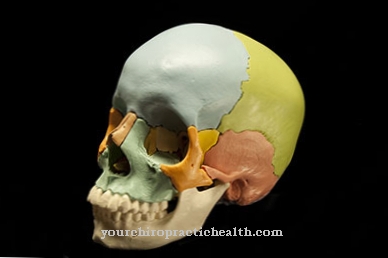
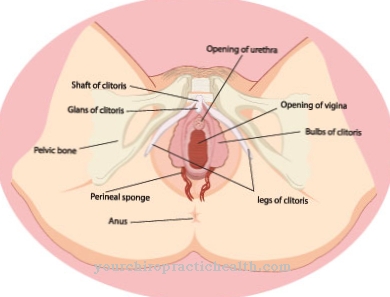
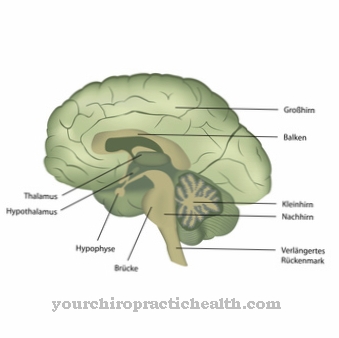
.jpg)
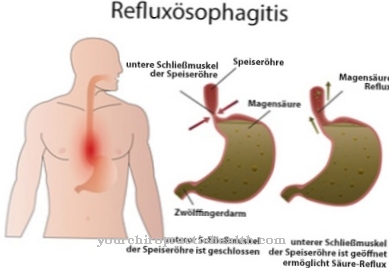
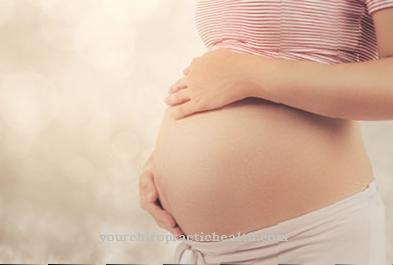

















.jpg)



